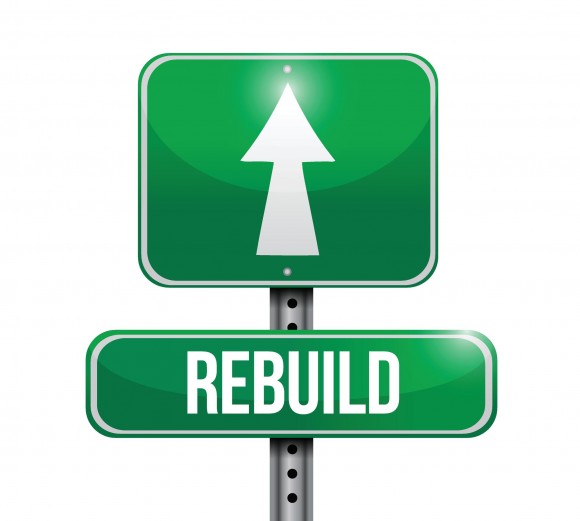Louisiana has yet to spend $1.5 billion of federal disaster recovery aid provided by Congress after hurricanes Katrina, Rita, Gustav and Ike ravaged the state in 2005 and 2008.
The flexible block grant rebuilding and strengthening money remains set aside for infrastructure repairs, home rebuilding, school reconstruction and business assistance. Nearly all of it is tied to specific projects, as efforts to navigate the bureaucratic hurdles of recovery stretch over years.
Gov. Bobby Jindal’s administration has defended the pace of spending, saying the Katrina recovery alone was one of the largest disaster rebuilding efforts in the nation’s history.
“Recovery takes time,” said Pat Forbes, Jindal’s director for disaster recovery work. “We are constantly reviewing other unmet recovery needs for where funds could go.”
Millions remain in unused housing assistance money allocated to the Road Home program created after the back-to-back blows of Katrina and Rita in 2005. A slice of money set aside to rebuild rental housing is not yet spent.
Most of the money earmarked for local communities to steer to their own recovery projects after Gustav and Ike struck Louisiana in 2008 remains untapped, though Jindal had said those dollars would be more quickly used if towns and parishes made their own spending plans.
The amount of unspent cash represents 10 percent of the $14.5 billion in Community Development Block Grant aid that Louisiana received from Congress after the storms.
About $890 million is left from a pool of $13.4 billion in Katrina and Rita aid, and more than $600 million remains from the $1.1 billion received after Gustav and Ike. Spending plans require approval from the U.S. Department of Housing and Urban Development.
Former Gov. Kathleen Blanco received heavy criticism after Katrina and Rita about the slow pace of aid flow. Since Jindal’s been in office, lawmakers have raised similar questions about recovery spending under his watch.
Bipartisan groups of state lawmakers sought more authority over the spending and more ability to determine how remaining dollars should be divvied up, but those efforts were defeated amid opposition from Jindal.
Lawmakers on a hurricane recovery committee have repeatedly sought plans to redirect money that hasn’t been used. Sen. Ed Murray, D-New Orleans and the committee chairman, said he’s concerned that Congress could seek to reclaim the block grant aid if it remains unused too long.
“There are an awful lot of things that need to get done, and the money has been sitting there for a long time not spent,” Murray said. “They have been very, very slow to redirect the money.”
Of the recovery cash remaining, about $640 million is earmarked to local communities to decide the spending.
Forbes said that money has been used by towns and parishes as they learn what constraints they have on disaster aid they’ve received from FEMA. He said communities wanted to learn what FEMA would pay to rebuild, before they decided where their recovery gaps are for the more flexible block grant aid.
But Forbes said he expects much of that money to be pushed out within the next two to three years, and the state put construction deadlines in place to speed the efforts.
Sen. Norby Chabert, R-Houma, said he’s grateful the state still has recovery money rather than spending it all too quickly, before the full scope of damage and rebuilding needs were clear. Chabert represents part of coastal southeastern Louisiana, including Terrebonne Parish, which was hit by all four hurricanes.
“In many ways, you’ve got to complete the preliminary recovery things to find out what else you really need, and I kind of think that that’s where we’ve been,” he said. “It’s not that bad to have some extra money sitting on the sidelines. The needs are great and still out there.”
The Jindal administration intends to use much of the $140 million left in the Road Home program to help fill financing gaps for people who received previous grants but didn’t have enough money to finish rebuilding.
Nearly $9 billion has been spent on Road Home grants to 130,000 homeowners. But not everyone who got a grant was able to get back into a house.
People lost money to fraudulent contractors. Some rebuilt only to run into problems with Chinese drywall. Other homeowners got their Road Home check and had it seized by the bank to pay off a mortgage.
“Our objective obviously is to get every single resident who wants to come back in their home,” Forbes said.
In recent years, the Jindal administration also has redirected some recovery money – with federal approval – to the state’s free preschool program for at-risk children, upgrades at the New Orleans Superdome and economic development incentive packages.
But Forbes said he doesn’t think the state is at risk of losing its recovery block grant money even though the state is years removed from the storms. He said 98 percent of the money is allocated to programs that are paying out dollars each month to recovery needs.
“I think that we have a very good story to tell in Louisiana. In the end, I think that the investments that the people of the United States have entrusted us with have been well-invested, have driven a strong recovery and continue to do that,” he said.
Topics Catastrophe Natural Disasters Legislation Louisiana Hurricane
Was this article valuable?
Here are more articles you may enjoy.



 Husband and Wife Sentenced for $20 Million Insurance Fraud Scheme
Husband and Wife Sentenced for $20 Million Insurance Fraud Scheme  Louisiana Insurers Must Disclose Prior Policy Premiums Under Controversial New Law
Louisiana Insurers Must Disclose Prior Policy Premiums Under Controversial New Law  First-Half 2025 Insured Losses From Natural Cats Hit $100B, Driven by US Events
First-Half 2025 Insured Losses From Natural Cats Hit $100B, Driven by US Events  Villages Health System Sees $350 Million in Medicare Overcharges
Villages Health System Sees $350 Million in Medicare Overcharges 

